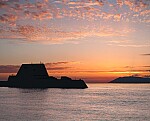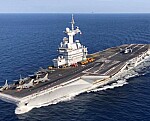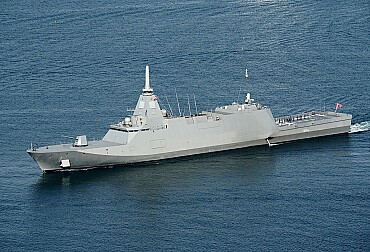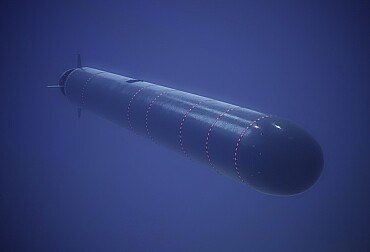French Submarines Armed With New M51.3 Nuclear Missile Capable of Global Reach
French Ministry of the Armed Forces and prime contractor – ArianeGroup – recently announced the successful first flight test of the M51.3 strategic ballistic missile, which exceeds the power of the Little Boy atomic bomb dropped on Hiroshima ten times.
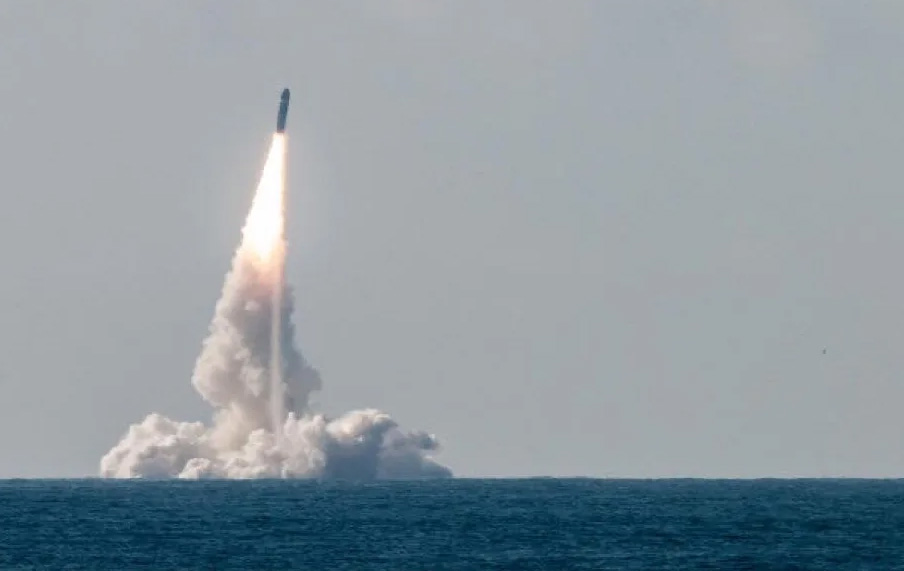
France has just taken a major step in modernising its nuclear deterrent. On 18 October 2025 the French Ministry of the Armed Forces and prime contractor ArianeGroup announced the successful first flight test of the M51.3 strategic ballistic missile from the DGA’s Biscarrosse test centre in Landes. Fired from a submerged platform that mimicked a Triomphant-class submarine, the missile followed a flawless 6,000-kilometre trajectory over the Atlantic before splashing down in the South Pacific. This triumph closes a twelve-year, seven-billion-euro upgrade programme and opens a new chapter for the oceanic pillar of France’s deterrence.
The M51.3 stands twelve metres tall and weighs fifty-two tonnes at launch. Three solid-propellant stages hurl it to Mach 18—roughly twenty-two thousand kilometres per hour. From the North Atlantic it can reach any point on Earth; its maximum range exceeds ten thousand kilometres with six warheads or fourteen thousand with a lighter payload. Each missile now carries up to six new Tête Nucléaire Océanique 2 (TNO-2) warheads. Independently targetable, each delivers one hundred and fifty kilotons—ten times the yield of the Hiroshima bomb and fifty per cent more than the earlier TN-75. Le Figaro’s claim that the full load equals “one thousand times Hiroshima” simply adds the six separate blasts.
Three breakthroughs set the M51.3 apart from every predecessor. A plasma cloak and low radar cross-section make it nearly invisible to early-warning satellites. Hypersonic manoeuvring re-entry vehicles, escorted by decoys, outwit Aegis, THAAD and Russia’s A-135/235 interceptors. Inertial, stellar and GPS guidance combine to deliver a circular error probable of ninety metres, precise enough to destroy hardened silos or buried command posts.
France’s four Triomphant-class submarines—Le Triomphant, Le Téméraire, Le Vigilant and Le Terrible—each carry sixteen M51 missiles in vertical tubes. One boat is always on patrol, hidden beneath the North Atlantic or Norwegian Sea, beyond the reach of satellites and sonars. From 2026 every patrol will sail with only M51.3s; the last M51.1 and M51.2 missiles will retire by 2028. A full load of three hundred and eighty-four warheads accounts for eighty per cent of France’s two hundred and ninety operational warheads declared under the Non-Proliferation Treaty.
The journey to this moment began in 2013 with the decision to launch the programme. Static firing of the new third stage followed in 2018, qualification of the TNO-2 warhead at Valduc in 2022, and the triumphant flight test in 2025. Twelve hundred engineers at ArianeGroup’s plants in Les Mureaux and Kourou, supported by three hundred small firms across Nouvelle-Aquitaine and Normandy, preserved six thousand sovereign jobs and kept solid-propellant know-how in French hands.
On 28 August 2025, the Direction Générale de l’Armement handed ArianeGroup the M51.4 development contract. The future missile, due between 2035 and 2040, will stretch to fourteen metres and sixty tonnes. Composite casings, 3D-printed nozzles, eight warheads with yields selectable from five to three hundred kilotons, plus laser gyroscopes and quantum accelerometers will keep France untouchable even if GPS is jammed. A nine-billion-euro budget will fund the missile and the third-generation SNLE-3G submarines whose keels will be laid in Cherbourg in 2032.
By commissioning the M51.3, France speaks clearly to three audiences. To NATO allies: Paris will never subcontract its ultimate decision. To any would-be aggressor: a first strike will be answered by the “massive and irreversible” riposte President Macron promised at the École de Guerre in 2020. To French citizens: the annual six-and-a-half-billion-euro nuclear budget—twelve per cent of total defence spending—buys sovereignty in an era of resurgent great-power rivalry.
France’s sea-based deterrent began in 1962 when de Gaulle created the Force de Frappe. The first submarine, Le Redoutable, entered service in 1971 with short-range M1 missiles. The M45 arrived in 1996, the M51.1 in 2010, the penetration-aided M51.2 in 2018. Today the M51.3 completes the cycle. Among the five recognised nuclear powers, only France and China design both missile and warhead entirely at home. The United States fields the longer-range Trident II D5LE, Russia the Bulava and future Sarmat-2, China the JL-3. Britain shares America’s Trident but not its warheads.




